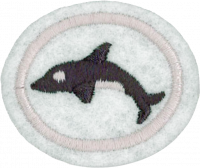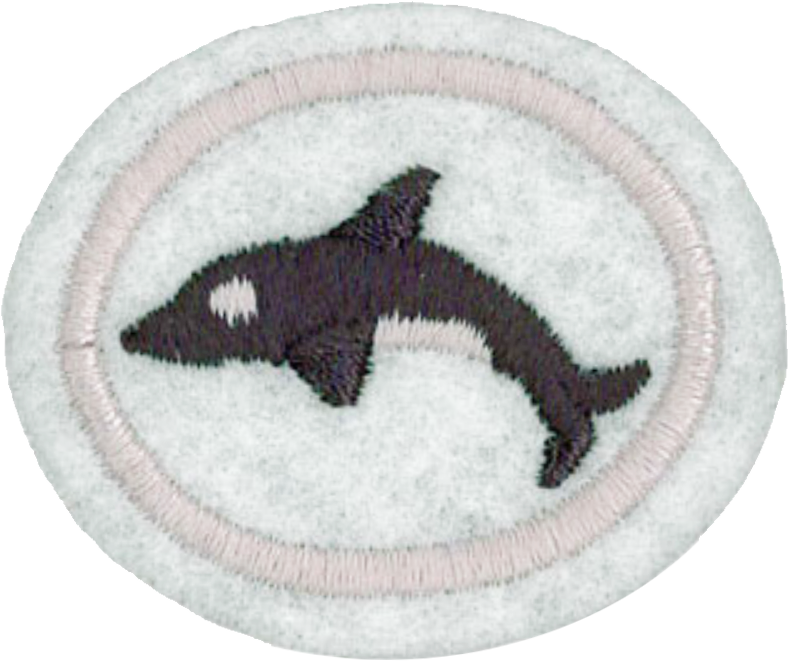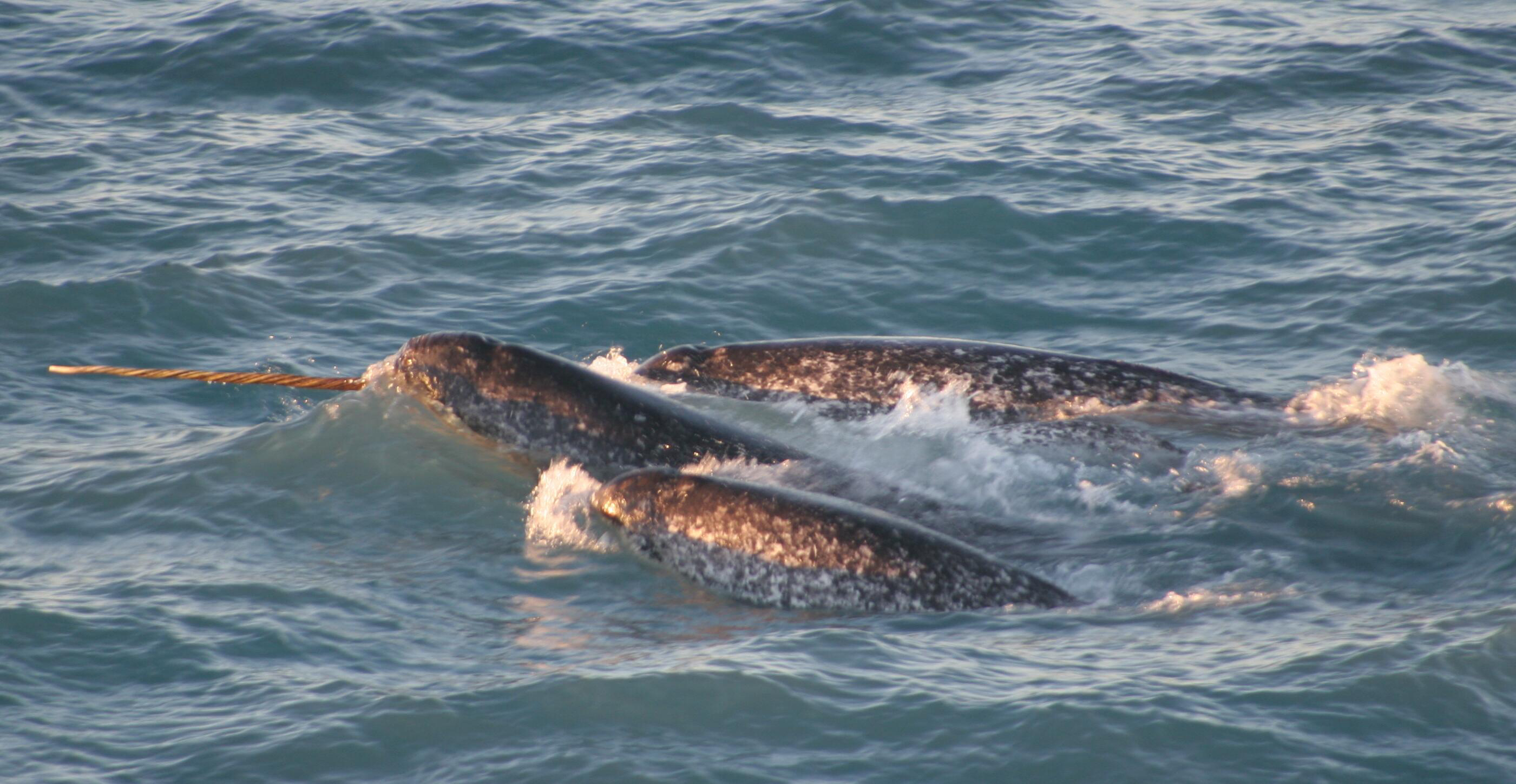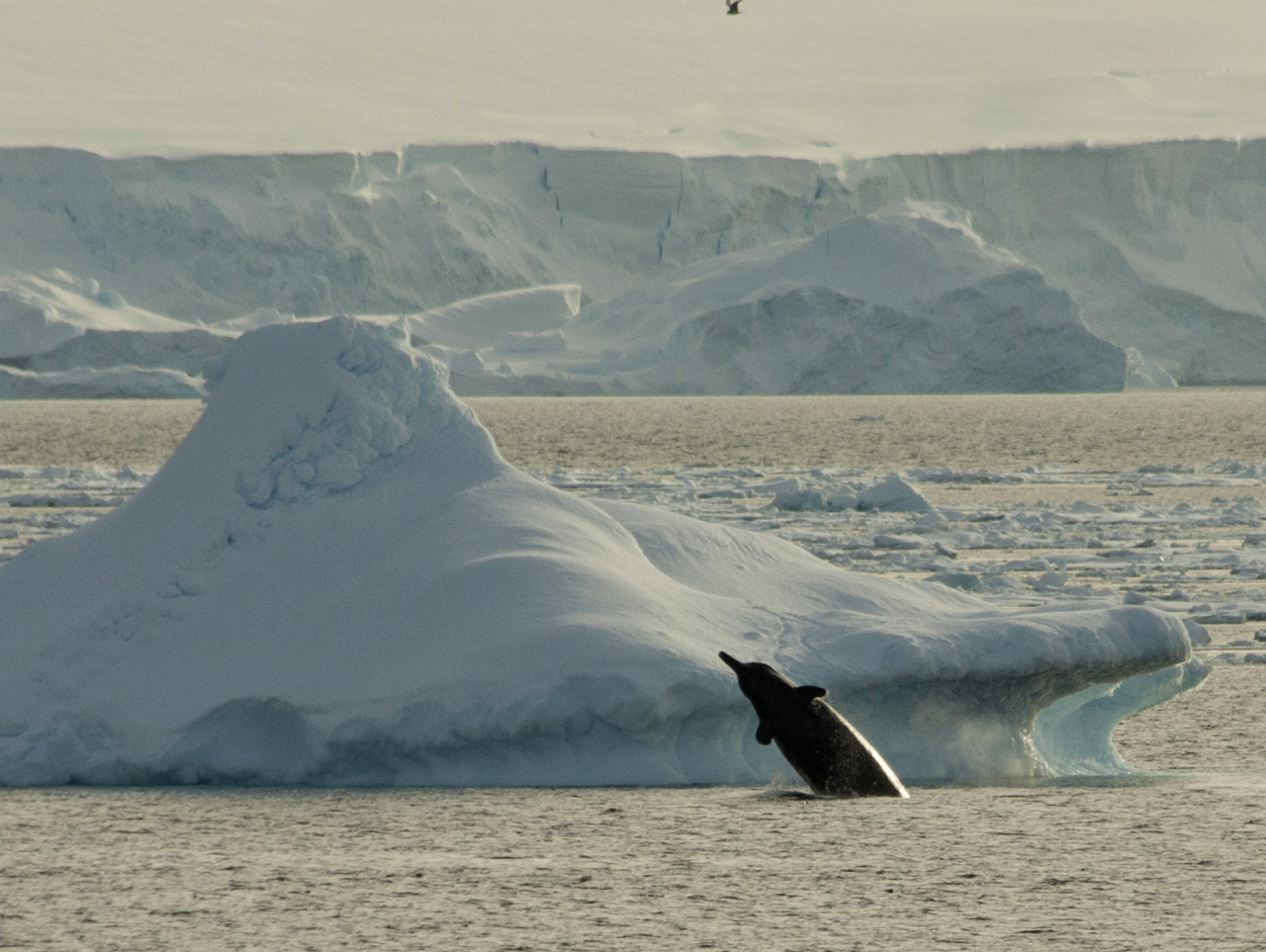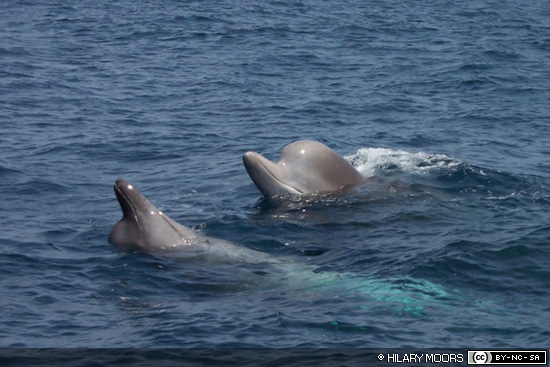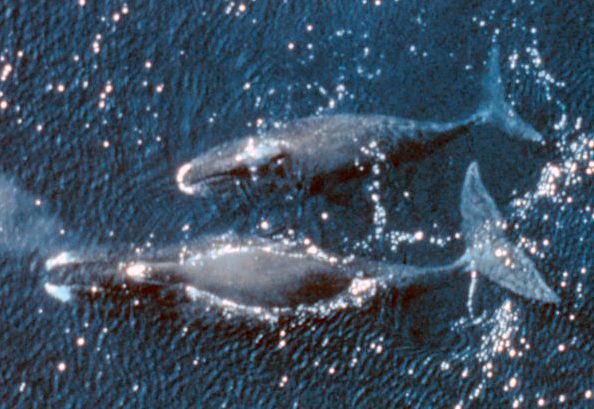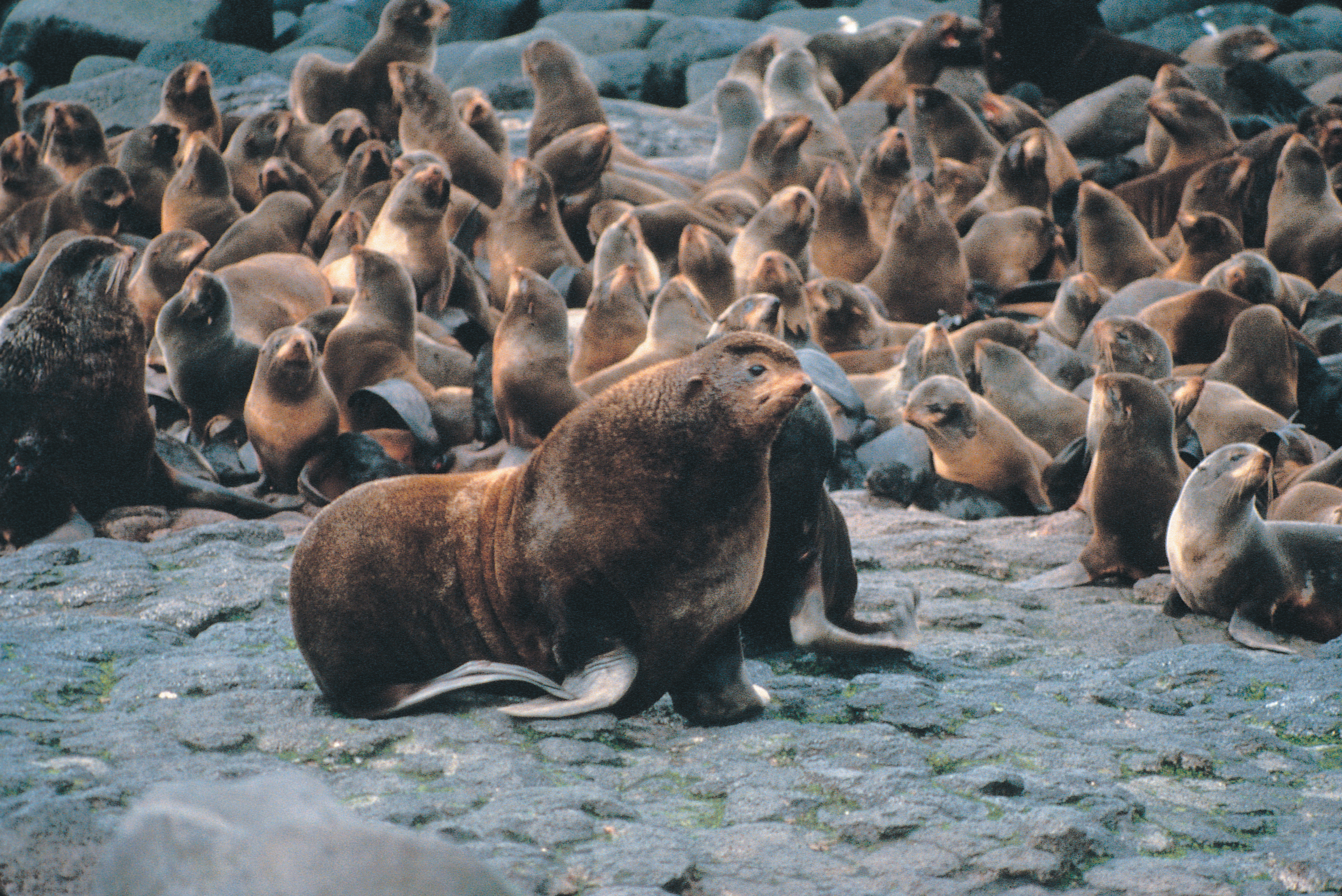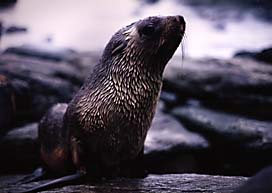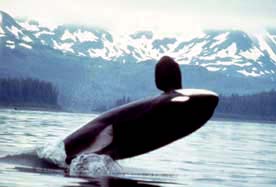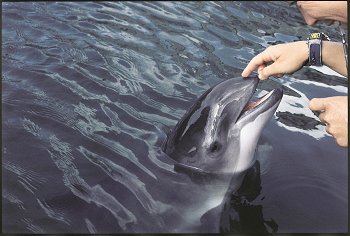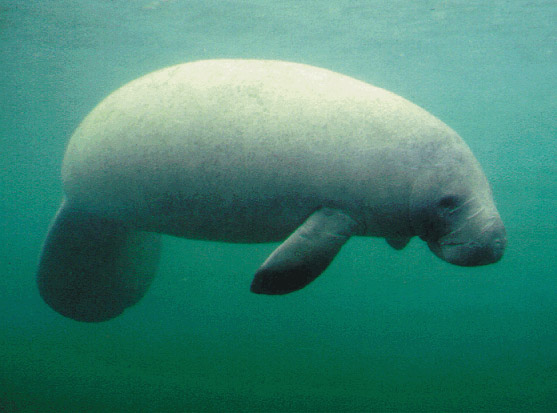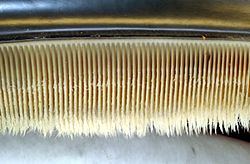Difference between revisions of "AY Honors/Marine Mammals/Answer Key"
m |
|||
| (50 intermediate revisions by 7 users not shown) | |||
| Line 1: | Line 1: | ||
| − | {{ | + | {{HonorSubpage}} |
| − | + | <!--{{Honor_Master|honor={{#titleparts:{{PAGENAME}}|1|3}}|master=Zoology|group=required}}--> | |
| − | ==1. Be able to identify three of each of the following and know where each is found. Know at least one by scientific name from each group: | + | <section begin="Body" /> |
| − | + | {{ansreq|page={{#titleparts:{{PAGENAME}}|2|1}}|num=1}} | |
| − | + | <noinclude><translate><!--T:42--> | |
| − | + | </noinclude> | |
| − | + | <!-- 1. Be able to identify three of each of the following and know where each is found. Know at least one by scientific name from each group: --> | |
| − | |||
| − | |||
| − | |||
| − | |||
| − | |||
| − | |||
| − | |||
| − | |||
| − | |||
| − | |||
| − | |||
| − | |||
| − | |||
| − | |||
| − | |||
| − | |||
| − | |||
| − | |||
| − | |||
| − | |||
| − | |||
| − | |||
| − | |||
| − | |||
| − | |||
| − | |||
| − | |||
| − | |||
| − | |||
| − | |||
| + | <!--T:43--> | ||
| + | <noinclude></translate></noinclude> | ||
| + | {{ansreq|page={{#titleparts:{{PAGENAME}}|2|1}}|num=1a}} <!--T:2--> | ||
| + | <noinclude><translate><!--T:44--> | ||
| + | </noinclude> | ||
| + | {{:AY Honors/Species Account/Delphinapterus leucas}} | ||
| + | {{:AY Honors/Species Account/Monodon monoceros}} | ||
| + | {{:AY Honors/Species Account/Physeter macrocephalus}} | ||
| + | {{:AY Honors/Species Account/Kogia breviceps}} | ||
| + | {{:AY Honors/Species Account/Berardius}} | ||
| + | {{:AY Honors/Species Account/Hyperoodon}} | ||
| + | {{:AY Honors/Species Account/Ziphius cavirostris}} | ||
Dolphins and porpoises are also classified as toothed whales, but since they appear as a separate group in this requirement, they are not listed here. | Dolphins and porpoises are also classified as toothed whales, but since they appear as a separate group in this requirement, they are not listed here. | ||
| − | + | <!--T:45--> | |
| − | + | <noinclude></translate></noinclude> | |
| − | {{ | + | {{CloseReq}} <!-- 1a --> |
| − | + | {{ansreq|page={{#titleparts:{{PAGENAME}}|2|1}}|num=1b}} <!--T:3--> | |
| − | }} | + | <noinclude><translate><!--T:46--> |
| − | {{ | + | </noinclude> |
| − | | | + | {{:AY Honors/Species Account/Balaenoptera musculus}} |
| − | | | + | {{:AY Honors/Species Account/Balaena mysticetus}} |
| − | | | + | {{:AY Honors/Species Account/Megaptera novaeangliae}} |
| − | | | + | {{:AY Honors/Species Account/Eschrichtius robustus}}{{:AY Honors/Species Account/Caperea marginata}} |
| − | |||
| − | |||
| − | |||
| − | |||
| − | {{ | ||
| − | |||
| − | |||
| − | |||
| − | |||
| − | |||
| − | }} | ||
| − | |||
| − | {{ | ||
| − | |||
| − | |||
| − | |||
| − | |||
| − | |||
| − | }} | ||
| − | |||
| − | |||
| − | {{ | ||
| − | |||
| − | |||
| − | |||
| − | |||
| − | |||
| − | }} | ||
| − | |||
| − | |||
| − | {{ | ||
| − | |||
| − | |||
| − | |||
| − | |||
| − | |||
| − | }} | ||
| + | <!--T:47--> | ||
| + | <noinclude></translate></noinclude> | ||
| + | {{CloseReq}} <!-- 1b --> | ||
| + | {{ansreq|page={{#titleparts:{{PAGENAME}}|2|1}}|num=1c}} <!--T:4--> | ||
| + | <noinclude><translate><!--T:48--> | ||
| + | </noinclude> | ||
| − | {{ | + | <!--T:5--> |
| − | + | {{:AY Honors/Species Account/Monachus schauinslandi}} | |
| − | + | {{:AY Honors/Species Account/Mirounga}} | |
| − | + | {{:AY Honors/Species Account/Hydrurga leptonyx}} | |
| − | + | {{:AY Honors/Species Account/Halichoerus grypus}} | |
| − | |||
| − | }} | ||
| − | == | + | <!--T:49--> |
| + | <noinclude></translate></noinclude> | ||
| + | {{CloseReq}} <!-- 1c --> | ||
| + | {{ansreq|page={{#titleparts:{{PAGENAME}}|2|1}}|num=1d}} <!--T:6--> | ||
| + | <noinclude><translate><!--T:50--> | ||
| + | </noinclude> | ||
| + | <!--T:7--> | ||
{{Species_id | {{Species_id | ||
| latin_name = Callorhinus ursinus | | latin_name = Callorhinus ursinus | ||
| Line 106: | Line 61: | ||
}} | }} | ||
| + | <!--T:8--> | ||
{{Species_id | {{Species_id | ||
| latin_name = Arctocephalus gazella | | latin_name = Arctocephalus gazella | ||
| Line 111: | Line 67: | ||
| image = Sealu.jpg | | image = Sealu.jpg | ||
| range = As its name suggests, the Antarctic Fur Seal is distributed in Antarctic waters. Around 95% of the world population breeds at South Georgia. | | range = As its name suggests, the Antarctic Fur Seal is distributed in Antarctic waters. Around 95% of the world population breeds at South Georgia. | ||
| − | | description = This fur seal has a short and broad snout compared with others in the family. Adult males are dark brown. Females and juveniles tend to be grey with a lighter underside. | + | | description = This fur seal has a short and broad snout compared with others in the family. Adult males are dark brown. Females and juveniles tend to be grey with a lighter underside. Antarctic Fur Seals appear to act alone when foraging and migrating. A strong male may have more than a dozen female partners in a single season. Territories are established on breeding grounds in October to early November, when the musty-smelling males are extremely aggressive in defense of their harems. Females gestate for just over a year - giving birth in November or December. Pups are weaned at about month old. Juveniles may then spend several years in the water before returning to begin their breeding cycle. |
}} | }} | ||
| + | <!--T:9--> | ||
{{Species_id | {{Species_id | ||
| latin_name = Eumetopias jubatus | | latin_name = Eumetopias jubatus | ||
| Line 122: | Line 79: | ||
}} | }} | ||
| + | <!--T:10--> | ||
{{Species_id | {{Species_id | ||
| latin_name = Zalophus californianus | | latin_name = Zalophus californianus | ||
| Line 130: | Line 88: | ||
}} | }} | ||
| − | + | <!--T:51--> | |
| − | {{ | + | <noinclude></translate></noinclude> |
| − | + | {{CloseReq}} <!-- 1d --> | |
| − | + | {{ansreq|page={{#titleparts:{{PAGENAME}}|2|1}}|num=1e}} <!--T:11--> | |
| − | + | <noinclude><translate><!--T:52--> | |
| − | + | </noinclude> | |
| − | + | {{:AY Honors/Species Account/Orcinus_orca}} | |
| − | }} | + | {{:AY Honors/Species Account/Tursiops_truncatus}} |
| − | + | {{:AY Honors/Species Account/Delphinus_delphis}} | |
| − | {{ | + | {{:AY Honors/Species Account/Neophocaena_phocaenoides}} |
| − | | | + | {{:AY Honors/Species Account/Phocoena_phocaena}} |
| − | | | ||
| − | | | ||
| − | |||
| − | | | ||
| − | }} | ||
| − | |||
| − | |||
| − | |||
| − | |||
| − | |||
| − | |||
| − | |||
| − | }} | ||
| − | |||
| − | {{ | ||
| − | |||
| − | |||
| − | |||
| − | |||
| − | |||
| − | }} | ||
| − | |||
| − | {{ | ||
| − | |||
| − | |||
| − | |||
| − | |||
| − | |||
| − | }} | ||
| − | |||
| − | |||
| − | |||
| − | {{ | ||
| − | |||
| − | |||
| − | |||
| − | |||
| − | |||
| − | }} | ||
| − | |||
| − | |||
| − | |||
| − | {{ | ||
| − | |||
| − | |||
| − | |||
| − | |||
| − | |||
| − | }} | ||
| − | == | + | <!--T:53--> |
| + | <noinclude></translate></noinclude> | ||
| + | {{CloseReq}} <!-- 1e --> | ||
| + | {{ansreq|page={{#titleparts:{{PAGENAME}}|2|1}}|num=1f}} <!--T:12--> | ||
| + | <noinclude><translate><!--T:54--> | ||
| + | </noinclude> | ||
| + | {{:AY Honors/Species Account/Odobenus rosmarus}} | ||
| − | {{ | + | <!--T:55--> |
| − | | | + | <noinclude></translate></noinclude> |
| − | | | + | {{CloseReq}} <!-- 1f --> |
| − | | | + | {{ansreq|page={{#titleparts:{{PAGENAME}}|2|1}}|num=1g}} <!--T:13--> |
| − | | | + | <noinclude><translate><!--T:56--> |
| − | + | </noinclude> | |
| − | }} | + | {{:AY Honors/Species Account/Enhydra lutris}} |
| − | {{ | + | <!--T:57--> |
| − | | | + | <noinclude></translate></noinclude> |
| − | | | + | {{CloseReq}} <!-- 1g --> |
| − | | | + | {{ansreq|page={{#titleparts:{{PAGENAME}}|2|1}}|num=1h}} <!--T:14--> |
| − | | | + | <noinclude><translate><!--T:58--> |
| − | + | </noinclude> | |
| − | |||
| − | {{ | + | <!--T:15--> |
| − | + | {{:AY Honors/Species Account/Trichechus inunguis}} | |
| − | + | {{:AY Honors/Species Account/Trichechus manatus}} | |
| − | + | {{:AY Honors/Species Account/Trichechus senegalensis}} | |
| − | |||
| − | |||
| − | }} | ||
| − | ==2. Know and locate the story of how God used a whale in Bible times. | + | <!--T:59--> |
| − | This is, of course, the story of Jonah | + | <noinclude></translate></noinclude> |
| + | {{CloseReq}} <!-- 1h --> | ||
| + | {{CloseReq}} <!-- 1 --> | ||
| + | {{ansreq|page={{#titleparts:{{PAGENAME}}|2|1}}|num=2}} | ||
| + | <noinclude><translate><!--T:60--> | ||
| + | </noinclude> | ||
| + | <!-- 2. Know and locate the story of how God used a whale in Bible times. --> | ||
| + | This is, of course, the story of Jonah located in the Biblical Book of {{Bible link|Jonah}}, . | ||
| − | ==3. What is the largest mammal in the sea? | + | <!--T:61--> |
| + | <noinclude></translate></noinclude> | ||
| + | {{CloseReq}} <!-- 2 --> | ||
| + | {{ansreq|page={{#titleparts:{{PAGENAME}}|2|1}}|num=3}} | ||
| + | <noinclude><translate><!--T:62--> | ||
| + | </noinclude> | ||
| + | <!-- 3. What is the largest mammal in the sea? --> | ||
The largest mammal in the sea, and indeed, the largest animal in the history of the world, is the Blue Whale (Balaenoptera musculus). | The largest mammal in the sea, and indeed, the largest animal in the history of the world, is the Blue Whale (Balaenoptera musculus). | ||
| − | ==4. Explain the following words: == | + | <!--T:63--> |
| − | + | <noinclude></translate></noinclude> | |
| + | {{CloseReq}} <!-- 3 --> | ||
| + | {{ansreq|page={{#titleparts:{{PAGENAME}}|2|1}}|num=4}} | ||
| + | <noinclude><translate><!--T:64--> | ||
| + | </noinclude> | ||
| + | <!-- 4. Explain the following words: --> | ||
| + | <noinclude></translate></noinclude> | ||
| + | {{ansreq|page={{#titleparts:{{PAGENAME}}|2|1}}|num=4a}} | ||
| + | <noinclude><translate><!--T:65--> | ||
| + | </noinclude> | ||
| + | <!--T:19--> | ||
Breaching is when a whale leaps into the air and falls on their backs. There are a variety of explanations about why different whales and dolphins perform this artful leap. Some researchers have proposed it may be a behavior to dislodge parasites off of the whale's back, while others have interpreted it as a form of communication. Some believe the whale is just having fun! | Breaching is when a whale leaps into the air and falls on their backs. There are a variety of explanations about why different whales and dolphins perform this artful leap. Some researchers have proposed it may be a behavior to dislodge parasites off of the whale's back, while others have interpreted it as a form of communication. Some believe the whale is just having fun! | ||
| − | == | + | <!--T:66--> |
| + | <noinclude></translate></noinclude> | ||
| + | {{CloseReq}} <!-- 4a --> | ||
| + | {{ansreq|page={{#titleparts:{{PAGENAME}}|2|1}}|num=4b}} <!--T:20--> | ||
| + | <noinclude><translate><!--T:67--> | ||
| + | </noinclude> | ||
Echolocation is the biological sonar used by several mammals such as bats, dolphins and whales. | Echolocation is the biological sonar used by several mammals such as bats, dolphins and whales. | ||
| + | <!--T:21--> | ||
Animals that use echolocation emit calls out to the environment. They listen to the echoes that return from various objects in the environment. They use these echoes to locate, range and identify the objects. Echolocation is used for navigation and for foraging (or hunting) in various environments. | Animals that use echolocation emit calls out to the environment. They listen to the echoes that return from various objects in the environment. They use these echoes to locate, range and identify the objects. Echolocation is used for navigation and for foraging (or hunting) in various environments. | ||
| − | Toothed whales, including dolphins, porpoises, river dolphins, orcas and sperm whales, use echolocation | + | <!--T:22--> |
| + | Toothed whales, including dolphins, porpoises, river dolphins, orcas and sperm whales, use echolocation because they live in an underwater habitat that has favorable acoustic characteristics and where vision is extremely limited in range due to absorption or turbidity. | ||
| − | == | + | <!--T:68--> |
| + | <noinclude></translate></noinclude> | ||
| + | {{CloseReq}} <!-- 4b --> | ||
| + | {{ansreq|page={{#titleparts:{{PAGENAME}}|2|1}}|num=4c}} <!--T:23--> | ||
| + | <noinclude><translate><!--T:69--> | ||
| + | </noinclude> | ||
| − | Spyhopping is when a dolphin and whales are in a vertical stance so they can look at their surroundings above the water. | + | <!--T:24--> |
| + | Spyhopping is when a dolphin and whales are in a vertical stance so they can look at their surroundings above the water. The whale slowly rises straight out of the water, until its eye is above the water surface. After a few moments, the whale sinks back down. Again, we cannot be sure why whales spyhop, but they may be coming up to take a look around. | ||
| − | == | + | <!--T:70--> |
| + | <noinclude></translate></noinclude> | ||
| + | {{CloseReq}} <!-- 4c --> | ||
| + | {{ansreq|page={{#titleparts:{{PAGENAME}}|2|1}}|num=4d}} <!--T:25--> | ||
| + | <noinclude><translate><!--T:71--> | ||
| + | </noinclude> | ||
[[Image:Baleen.jpg|thumb|250px|Baleen]] | [[Image:Baleen.jpg|thumb|250px|Baleen]] | ||
| − | Baleen makes up baleen plates, which are arranged in two parallel rows that look like combs of thick hair; they are attached to the upper jaws of baleen whales. Whales use these combs for filter feeding. Baleen whales scoop vast amounts of water into their mouths, and then push the water back out their mouths through the baleen plates. | + | Baleen makes up baleen plates, which are arranged in two parallel rows that look like combs of thick hair; they are attached to the upper jaws of baleen whales. Whales use these combs for filter feeding. Baleen whales scoop vast amounts of water into their mouths, and then push the water back out their mouths through the baleen plates. The baleen plates prevent fish and plankton from flowing out of their mouths. Whales are the only vertebrate group to use this method of feeding in great abundance (flamingos and crabeater seals use similar methods, but do not have baleen), and it has allowed them to grow to immense sizes. |
| − | == | + | <!--T:72--> |
| + | <noinclude></translate></noinclude> | ||
| + | {{CloseReq}} <!-- 4d --> | ||
| + | {{ansreq|page={{#titleparts:{{PAGENAME}}|2|1}}|num=4e}} <!--T:26--> | ||
| + | <noinclude><translate><!--T:73--> | ||
| + | </noinclude> | ||
A pod is a social group of whales, porpoises, or dolphins. | A pod is a social group of whales, porpoises, or dolphins. | ||
| − | == | + | <!--T:74--> |
| − | A harem is a group of female seals, which are corralled together by a male for the purpose of mating. | + | <noinclude></translate></noinclude> |
| + | {{CloseReq}} <!-- 4e --> | ||
| + | {{ansreq|page={{#titleparts:{{PAGENAME}}|2|1}}|num=4f}} <!--T:27--> | ||
| + | <noinclude><translate><!--T:75--> | ||
| + | </noinclude> | ||
| + | A harem is a group of female seals, which are corralled together by a male for the purpose of mating. The male Northern Fur Seals are possessive of individual females in their harem, often aggressively competing with neighboring males for females. Some males breed with up to 50 females in a single breeding season. Some types of whales also have harems. | ||
| − | == | + | <!--T:76--> |
| + | <noinclude></translate></noinclude> | ||
| + | {{CloseReq}} <!-- 4f --> | ||
| + | {{ansreq|page={{#titleparts:{{PAGENAME}}|2|1}}|num=4g}} <!--T:28--> | ||
| + | <noinclude><translate><!--T:77--> | ||
| + | </noinclude> | ||
Plankton are defined as any drifting organism that inhabits the water column of oceans, seas, and bodies of fresh water. They are widely considered to be one of the most important organisms on Earth, due to the food supply they provide to most aquatic life. | Plankton are defined as any drifting organism that inhabits the water column of oceans, seas, and bodies of fresh water. They are widely considered to be one of the most important organisms on Earth, due to the food supply they provide to most aquatic life. | ||
| − | ==5. Draw a food chain of two different marine mammals. | + | <!--T:78--> |
| + | <noinclude></translate></noinclude> | ||
| + | {{CloseReq}} <!-- 4g --> | ||
| + | {{CloseReq}} <!-- 4 --> | ||
| + | {{ansreq|page={{#titleparts:{{PAGENAME}}|2|1}}|num=5}} | ||
| + | <noinclude><translate><!--T:79--> | ||
| + | </noinclude> | ||
| + | <!-- 5. Draw a food chain of two different marine mammals. --> | ||
::'''phytoplankton → copepod → fish → squid → seal → orca''' | ::'''phytoplankton → copepod → fish → squid → seal → orca''' | ||
| + | <!--T:30--> | ||
This "chain" can be described as follows: Orca (also known as "killer whales") feed upon seals, that feed upon squid, that eat small fish, that feed on copepods, that feed on microscopic algae. | This "chain" can be described as follows: Orca (also known as "killer whales") feed upon seals, that feed upon squid, that eat small fish, that feed on copepods, that feed on microscopic algae. | ||
| + | <!--T:31--> | ||
::'''phytoplankton → krill → baleen whales''' | ::'''phytoplankton → krill → baleen whales''' | ||
| − | Food loses efficiency as it travels up the food chain from prey to predator. | + | <!--T:32--> |
| + | Food loses efficiency as it travels up the food chain from prey to predator. This is because each creature in the chain uses some of the energy it gained from its food. By keeping their food chain short, baleen whales are able to efficiently consume enormous amounts of energy, and therefore, they are able to grow to enormous sizes. | ||
| − | ==6. What is the purpose of blubber? | + | <!--T:80--> |
| + | <noinclude></translate></noinclude> | ||
| + | {{CloseReq}} <!-- 5 --> | ||
| + | {{ansreq|page={{#titleparts:{{PAGENAME}}|2|1}}|num=6}} | ||
| + | <noinclude><translate><!--T:81--> | ||
| + | </noinclude> | ||
| + | <!-- 6. What is the purpose of blubber? --> | ||
Blubber is a thick layer of fat found under the skin of all cetaceans, pinnipeds and sirenians. It covers the whole body, except for the appendages, loosely attached to the muscles. It can comprise up to 50% of the body mass of some marine mammals during some points in their lives. Blubber serves several different functions, it is the primary area of fat on some mammals, and essential for '''storing energy'''. It is particularly important for species which feed and breed in different parts of the ocean. During these periods the species are operating on a fat-based metabolism. | Blubber is a thick layer of fat found under the skin of all cetaceans, pinnipeds and sirenians. It covers the whole body, except for the appendages, loosely attached to the muscles. It can comprise up to 50% of the body mass of some marine mammals during some points in their lives. Blubber serves several different functions, it is the primary area of fat on some mammals, and essential for '''storing energy'''. It is particularly important for species which feed and breed in different parts of the ocean. During these periods the species are operating on a fat-based metabolism. | ||
| + | <!--T:34--> | ||
Blubber also serves as an efficient '''thermal insulator''', making it an essential for thermoregulation. It has advantages over fur (as used in Sea Otters) in this respect; fur can retain heat by holding pockets of air, but under pressure (while diving) the air pockets will be expelled. Blubber, however, does not compress under pressure. It can also aid in '''buoyancy''', and acts to streamline the body. | Blubber also serves as an efficient '''thermal insulator''', making it an essential for thermoregulation. It has advantages over fur (as used in Sea Otters) in this respect; fur can retain heat by holding pockets of air, but under pressure (while diving) the air pockets will be expelled. Blubber, however, does not compress under pressure. It can also aid in '''buoyancy''', and acts to streamline the body. | ||
| − | ==7. Know two reasons that seals are hunted. | + | <!--T:82--> |
| − | Seals are hunted for their '''fur''' and | + | <noinclude></translate></noinclude> |
| + | {{CloseReq}} <!-- 6 --> | ||
| + | {{ansreq|page={{#titleparts:{{PAGENAME}}|2|1}}|num=7}} | ||
| + | <noinclude><translate><!--T:83--> | ||
| + | </noinclude> | ||
| + | <!-- 7. Know two reasons that seals are hunted. --> | ||
| + | Seals are hunted for their '''fur''', '''meat''' and '''oil'''. They are also hunted by fishermen to '''eliminate competition for fish'''. Seals sometimes take bites out of fish already caught in a fisherman's net, making the fish unfit for sale. | ||
| − | ==8. Describe why seals and dolphins can move so quickly in the water. | + | <!--T:84--> |
| + | <noinclude></translate></noinclude> | ||
| + | {{CloseReq}} <!-- 7 --> | ||
| + | {{ansreq|page={{#titleparts:{{PAGENAME}}|2|1}}|num=8}} | ||
| + | <noinclude><translate><!--T:85--> | ||
| + | </noinclude> | ||
| + | <!-- 8. Describe why seals and dolphins can move so quickly in the water. --> | ||
The seal's flippers are enormously long, and the skin between them forms a web which is used like a paddle to propel the seal along. They have long, sturdy claws on their front flippers which they use to help them move on land, especially when they need to grip onto rocks or ice | The seal's flippers are enormously long, and the skin between them forms a web which is used like a paddle to propel the seal along. They have long, sturdy claws on their front flippers which they use to help them move on land, especially when they need to grip onto rocks or ice | ||
| − | ==9. Do one of the following: == | + | <!--T:86--> |
| − | + | <noinclude></translate></noinclude> | |
| − | This option will almost certainly be the most rewarding for your Pathfinders, but it will also require the most work on your part to get it organized. | + | {{CloseReq}} <!-- 8 --> |
| + | {{ansreq|page={{#titleparts:{{PAGENAME}}|2|1}}|num=9}} | ||
| + | <noinclude><translate><!--T:87--> | ||
| + | </noinclude> | ||
| + | <!-- 9. Do one of the following: --> | ||
| + | <noinclude></translate></noinclude> | ||
| + | {{ansreq|page={{#titleparts:{{PAGENAME}}|2|1}}|num=9a}} | ||
| + | <noinclude><translate><!--T:88--> | ||
| + | </noinclude> | ||
| + | This option will almost certainly be the most rewarding for your Pathfinders, but it will also require the most work on your part to get it organized. Try to contact the aquarium before setting off on your trip so that you can make arrangements to meet with a staff member there. They are usually very willing to help you, and will be delighted to provide you with information regarding the daily feeding schedule. Note that some zoos have aquariums too, so if a zoo is more convenient than an aquarium, you might want to investigate this possibility. | ||
| + | |||
| + | <!--T:38--> | ||
| + | {{AY Honors/Zoo Visit}} | ||
| − | == | + | <!--T:89--> |
| − | Much of the material for the answers presented here was taken from Wikipedia. | + | <noinclude></translate></noinclude> |
| + | {{CloseReq}} <!-- 9a --> | ||
| + | {{ansreq|page={{#titleparts:{{PAGENAME}}|2|1}}|num=9b}} <!--T:39--> | ||
| + | <noinclude><translate><!--T:90--> | ||
| + | </noinclude> | ||
| + | Much of the material for the answers presented here was taken from Wikipedia. You can start your research by reading the full articles: | ||
* [[w:Whale|Whales]] | * [[w:Whale|Whales]] | ||
* [[w:Toothed Whale|Tooth Whales]] | * [[w:Toothed Whale|Tooth Whales]] | ||
| Line 286: | Line 299: | ||
* [[w:Manatee|Manatees]] | * [[w:Manatee|Manatees]] | ||
| − | == | + | <!--T:91--> |
| − | Search Google News for marine mammals to find out about current events. | + | <noinclude></translate></noinclude> |
| + | {{CloseReq}} <!-- 9b --> | ||
| + | {{ansreq|page={{#titleparts:{{PAGENAME}}|2|1}}|num=9c}} <!--T:40--> | ||
| + | <noinclude><translate></noinclude> | ||
| + | Search Google News for marine mammals to find out about current events. http://news.google.com/news?hl=en&ned=us&q=marine+mammal&btnG=Search+News | ||
You can also search http://news.google.com for a particular marine mammal (such as whales, seals, dolphins, or manatees). | You can also search http://news.google.com for a particular marine mammal (such as whales, seals, dolphins, or manatees). | ||
| + | ===Note=== <!--T:92--> | ||
| + | This Honor and the [[AY Honors/Cetaceans|Cetaceans]] Honor have considerable overlap. Consider working on them together. | ||
| − | ==References== | + | <!--T:93--> |
| + | <noinclude></translate></noinclude> | ||
| + | {{CloseReq}} <!-- 9c --> | ||
| + | {{CloseReq}} <!-- 9 --> | ||
| + | <noinclude><translate></noinclude> | ||
| + | ==References== <!--T:41--> | ||
Much of the material here as adapted from numerous Wikipedia articles. | Much of the material here as adapted from numerous Wikipedia articles. | ||
| + | <noinclude></translate></noinclude> | ||
| − | [[Category:Adventist Youth Honors Answer Book | + | [[Category:Adventist Youth Honors Answer Book/Do at home{{GetLangSuffix}}]] |
| − | + | {{CloseHonorPage}} | |
Latest revision as of 02:29, 4 January 2023
1
1a
Beluga Whale (Delphinapterus leucas)
Where found: Arctic and sub-arctic oceans around North America, Russia and Greenland.
Description: Adapted to life in the Arctic, it has a number of anatomical and physiological characteristics that differentiate it from other cetaceans. The unmistakable all-white colour, absence of a dorsal fin, and the distinctive protuberance at the front of its head which houses an echolocation organ called the melon. The beluga’s body size is between that of a dolphin’s and a true whale’s, with males growing up to 5.5 m (18 ft) long and weighing up to 1,600 kg (3,500 lb). This whale has a stocky body; it has the greatest percentage of blubber. Its sense of hearing is highly developed and it possesses echolocation, which allows it to move about and find blowholes under sheet ice. Belugas form groups of up to 10 animals on average, although during the summer months, they can gather in the hundreds or even thousands in estuaries and shallow coastal areas. They are slow swimmers, but they can dive down to 700 m (2,300 ft) below the surface. They are opportunistic feeders and their diets vary according to their locations and the season. They mainly eat fish, crustaceans and other deep-sea invertebrates. Worldwide population is thought be around 150,000 individuals. They are migratory and the majority of groups spend the winter around the arctic ice cap; but when the sea ice melts in summer, they move to warmer river estuaries and coastal areas. Belugas are one of the cetaceans most commonly kept in captivity in aquaria and wildlife parks in North America, Europe and Asia where they are popular with the public due to their colour and expressivity. Wilma the Beluga Whale
Narwhal (Monodon monoceros)
Where found: Arctic and sub-arctic oceans around North America, Russia and Greenland.
Description: Adapted to life in the Arctic, Narwhale Nat Geo. These small whales have a long tusk (actually an elongated left canine tooth) protruding from the mouth. They eat fish which they hunt beneath the pack ice of arctic waters. Thy do not have a dorsal fin as most whales and dolphins do. Narwhals range from 4 to 5.5 meters (13-18 feet) in length.
Sperm Whale (Physeter macrocephalus)
Where found: The sperm whale can be found anywhere in the open ocean.
Description: Largest of the toothed whales and largest toothed predator in the world. The Sperm Whale breaks all kinds of records! Mature males may reach 20.5 metres (67 ft) and 57,000 kilograms (males much larger than females). It is the loudest of any animal, second deepest diving mammal with dives of up to 90 minutes, largest brain (five times heavier than a human brain), 116 kg (255 lbs) heart, longest intestinal system (exceeding 300 m in larger specimens) and other mind blowing measurements. The sperm whale's distinctive shape comes from its very large, block-shaped head, which can be one-quarter to one-third of the animal's length. The S-shaped blowhole is located very close to the front of the head and shifted to the whale's left, giving a distinctive bushy, forward-angled spray. Primary food is squid and they can live for more than 60 years. The sperm whale's flukes are triangular and very thick. Proportionally, they are larger than that of any other cetacean, and are very flexible. The whale lifts its flukes high out of the water as it begins a feeding dive. It has a series of ridges on the back's caudal third instead of a dorsal fin. The largest ridge was called the 'hump', and can be mistaken for a dorsal fin because of its shape and size. In contrast to the smooth skin of most large whales, its back skin is usually wrinkly and has been likened to a prune by whale-watching enthusiasts. From the early 18th century through the late 20th the species was a prime target of whalers. The head of the whale contains a liquid wax called spermaceti, which was used in lubricants, oil lamps, and candles. Ambergris, a waste product from its digestive system, is still used as a fixative in perfumes. The Sperm Whale is now protected by a whaling moratorium, and is currently listed as vulnerable. Sperm whales have sunk ships, including the real life Moby Dick who sunk the Essex. Jonathan Bird's Blue World: Sperm Whales
Pygmy & Dwarf Sperm Whales (Kogia breviceps)
Where found: Dwarf and Pygmy sperm whales are found throughout the tropical and temperate waters of the Atlantic, Pacific and Indian Oceans. However, they are rarely sighted at sea, so most data come from stranded and captured animals - making a precise range and migration map difficult. The dwarf is more coastal than the pygmy. There is no accurate estimate of number of these whales in the world or good data on conservation status.
Description: The dwarf sperm whale is the smallest species commonly known as a whale. It grows up to 2.7 m (8.9 ft) in length and 250 kilograms (550 lb) in weight. The species makes slow, deliberate movements with little splash or blow and usually lies motionless when at the sea's surface. Consequently it is usually observed only in very calm seas. These two species were not distinguished from each other until 1966 and are difficult to tell apart but the dwarf is slightly smaller and has a larger dorsal fin than the pygmy. The body is mainly bluish gray with a lighter underside with slightly yellow vein-like streaks possibly visible. There is a white false gill behind each eye. The flippers are very short and broad. The top of the snout overhangs the lower jaw, which is small. The whales have long, curved and sharp teeth (0–6 in the upper jaw, between 14 and 26 in the lower). These whales expel a dark reddish substance when frightened or attacked—possibly to put off any predators. They are usually solitary or paired but have occasionally been seen in small groups. All sperm whales have a spermaceti organ in the forehead. The brain of the dwarf sperm whale is roughly half a kilogram in mass.Video of stranded Pygmy Sperm Whale
Giant Beaked Whale/Arnoux and Baird’s Beaked Whales (Berardius)
Where found: Arnoux’s beaked whale Berardius arnuxii lives in cold Southern Hemisphere waters and Baird’s beaked whale Berardius bairdii is found the cold temperate waters of the North Pacific.
Description: You would not be able to see the differences between Arnoux and Baird’s beaked whales except that they live on opposite ends of the world. They grow to 10–12 m in length and up to 14,000 kg (31,000 lb). They have very long prominent beak, even by beaked whale standards. The lower jaw is longer than the upper and the front teeth are visible even when the mouth is fully closed. The melon is particularly bulbous. The body shape is slender - the girth is only 50% of length. The body is uniformly coloured and a particular individual's colour may be anything from light grey through to black. The flippers are small, rounded and set towards the front of the body. The dorsal fin similarly is small and rounded and set about three-quarters of the way along the back. Adult males and females of both species pick up numerous white linear scars all over the body as they age and may be a rough indicator of age.
- B. arnuxii is known as Arnoux's beaked whale, southern four-toothed whale, southern beaked whale, New Zealand beaked whale, southern giant bottlenose whale, and southern porpoise whale.
- B. bairdii is known as Baird's beaked whale, northern giant bottlenose whale, North Pacific bottlenose whale, giant four-toothed whale, northern four-toothed whale, and North Pacific four-toothed whale.
Northern and Southern Bottlenose Whales (Hyperoodon)
Where found: Northern bottlenose whale are found in the North Atlantic Ocean and is found in cool and subarctic deep waters such as the Davis Strait, the Labrador Sea, the Greenland Sea and the Barents Sea and as far south as Cape Verde Islands. Southern bottlenose whales are probably the most abundant whale in Antarctic waters.
Description: These sister species are fairly rotund with an extremely bluff melon. The beak is long and white on males but grey on females. The dorsal fin is relatively small at 30–38 centimetres (12–15 in) and set behind the middle of the back. It is falcate (sickle-shaped) and usually pointed. The Northern species measures 9.8 metres (32 ft) in length when physically mature. The back is mid-to-dark grey, with a lighter underside. The Southern bottlenose whale smaller growing to 7.5 m (25 ft) in length when physically mature. The back is light-to-mid grey, also with a lighter underside. Males are about 25% larger than females. These bottlenose whales live up to 37 years. Weight estimates are hard to come by. For the northern bottlenose whale, 5,800–7,500 kilograms (12,800–16,500 lb) is given somewhat consistently, while the smaller and less studied southern species will be lighter. The bottlenose whales are some of the deepest diving mammals known, reaching depths of 1453 m (4767 ft) The whales feed on squid, sea cucumbers, herring, cuttlefish, sea stars and other benthic invertebrates.Video Northern Bottlenose Whale
Cuvier's beaked whale (Ziphius cavirostris)
Where found: Open ocean worldwide except in the Arctic and Southern oceans.
Description: The Cuvier's beaked whale or goose-beaked whale is the most widely distributed of all the beaked whales. Individuals commonly have white scars and patches caused by cookiecutter sharks. It prefers depth greater than 1,000 m (3,300 ft) and avoids ships, it is still one of the most frequently spotted beaked whales. The maximum known depth reached by the Cuvier's beaked whale is 2,992 metres (9,816 ft), or 1.8 miles, making it the deepest-diving mammal. The species name comes from Greek xiphos, "sword", and Latin cavus, "hollow" and rostrum, "beak", referring to the indentation on the head in front of the blowhole. The body of Cuvier's beaked whale is robust and cigar-shaped, similar to those of other beaked whales and can be difficult to distinguish from many of the mesoplodont whales at sea. Males and females are the same size up to about 5–7 m (16–23 ft) in length 2,500 kg (5,500 lb). The dorsal fin is curved, small and located two-thirds of the body length behind the head. Flippers are equally small and narrow and can be tucked into pockets in the body wall, presumably to prevent drag while swimming. Like other beaked whales, its flukes are large and lack the medial notch found in all other cetaceans. The head is short with a small, poorly defined rostrum and a gently sloping melon. A pair of throat grooves allow the whale to expand this region when sucking in its prey. Cuvier's beaked whale has a short beak in comparison with other species in its family, with a slightly bulbous melon. The melon is white or creamy in color and a white strip runs back to the dorsal fin about two-thirds of the way along the back. The rest of the body color varies by individual: some are dark grey; others a reddish-brown. The dorsal fin varies in shape from triangular to highly falcate, whilst the fluke is about one-quarter the body length. They live for forty years. Culvers beaked whale
Dolphins and porpoises are also classified as toothed whales, but since they appear as a separate group in this requirement, they are not listed here.
1b
The blue whale (Balaenoptera musculus)
Where found: Blue whales were abundant in nearly all the oceans on Earth until the beginning of the twentieth century. For over a century, they were hunted almost to extinction by whalers until protected by the international community in 1966. A 2002 report estimated there were 5,000 to 12,000 blue whales worldwide located in at least five groups. Before whaling, the largest population was in the Antarctic, numbering approximately 239,000 (range 202,000 to 311,000). There remain only much smaller (around 2,000) concentrations in each of the eastern North Pacific, Antarctic, and Indian Ocean groups. There are two more groups in the North Atlantic, and at least two in the Southern Hemisphere.
Description:
At 30 metres (98 ft) in length and 170 tonnes (190 short tons) or more in weight, the Blue Whale is the largest known animal ever to have existed.
Long and slender, the blue whale's body can be various shades of bluish-grey dorsally and somewhat lighter underneath. There are at least three distinct subspecies: B. m. musculus of the North Atlantic and North Pacific, B. m. intermedia of the Southern Ocean and B. m. brevicauda (also known as the pygmy blue whale) found in the Indian Ocean and South Pacific Ocean. B. m. indica, found in the Indian Ocean, may be another subspecies. As with other baleen whales, its diet consists almost exclusively of small crustaceans known as krill.Bowhead Whale (Balaena mysticetus)
Where found: The bowhead spends all of its life in fertile Arctic waters, unlike other whales that migrate for feeding or reproduction.
Description: Bowhead whales are robust-bodied, dark-colored animals with no dorsal fin and a strongly bowed lower jaw and narrow upper jaw. The baleen plates, exceeding three meters and the longest of the baleen whales, are used to strain tiny prey from the water. The whales have massive bony skulls which they use to break from beneath the ice to breathe. Some Inuit hunters have reported whales surfacing through 60 cm (2 ft) of ice in this method. Bowheads may reach lengths of up to 20 metres and females are larger than males.
Humpback Whale (Megaptera novaeangliae)
Where found: The Humpback Whale lives in oceans and seas around the world, and is regularly sought out by whale-watchers.
Description: The Humpback is a very large whale. It is well known for its breaching (leaping out of the water), its unusually long front fins, and its complex whale song. The species feeds only in summer and lives off fat reserves during winter. It is an energetic feeder, taking krill and small schooling fish, such as herring, capelin and sand lance. It will hunt fish by direct attack or by stunning them by hitting the water with its flippers or flukes. Its most inventive feeding technique is called bubble net fishing. A group of whales will blow bubbles while swimming to create a visual barrier against fish, while one or more whales in the group make vocalizations that drive the fish against the wall. The bubble wall is then closed, encircling the fish, which are confined in an ever-tighter area. The whales then suddenly swim upwards and through the bubble net, mouths agape, swallowing thousands of fish in one gulp. This technique can involve a ring of bubbles up to 30 m (100 ft) in diameter and the cooperation of a dozen animals at once. It is one of the more spectacular acts of collaboration and cooperation among marine mammals.
Grey Whale (Eschrichtius robustus)
Where found: Two Pacific Ocean populations of Gray Whales exist: one small population traveling between the Sea of Okhotsk and southern Korea, and a larger one traveling between the waters off Alaska and the Baja California. A third, North Atlantic, population was hunted to extinction 300 years ago. In the fall, the California Gray Whale starts a 2–3 month, 8,000–11,000 km trip south along the west coast of the United States and Mexico. The animals travel in small groups. The destinations of the whales are the coastal waters of Baja California and the southern Gulf of California, where they breed and the young are born.
Description:
Gray Whales are covered by characteristic gray-white patterns, scars left by parasites which drop off in the cold feeding grounds. The whale feeds mainly on benthic crustaceans which it eats by turning on its side (usually the right) and scooping up the sediments from the sea floor. It is classified as a baleen whale and has a baleen, or whalebone, which acts like a sieve to capture small sea animals including amphipods taken in along with sand, water and other material. Mostly, the animal feeds in the northern waters during the summer; and opportunistically feeds during its migration trip, depending primarily on its extensive fat reserves.Pygmy right whale (Caperea marginata)
Where found: Southern Ocean
Description: The Pygmy right whale is rarely seen and little studied. Only about 25 "at sea" sightings have been recorded. It is not a right whale (misnamed) and was thought extinct until 2012. The smallest of the baleen whales, ranging between 6 metres (20 ft) and 6.5 metres (21 ft) in length and 3,000 and 3,500 kg in mass. Despite its name, the pygmy right whale may have more in common with the gray whale and rorquals than the bowhead and right whales.
1c
Hawaiian Monk Seal (Monachus schauinslandi)
Where found: Hawaiian Monk Seals are found in the Northwestern Hawaiian Islands and only occasionally seen around the major islands of Ni'ihau and Kaua'i—very rarely on beaches on O'ahu or the other islands. The largest population (less than 400 animals in 2002) occurs at French Frigate Shoals.
Description: Mature Hawaiian Monk Seals feature a grey pelage, or coat which turns brown with weathering. Young Hawaiian Monk Seals are silver with creamy white bellies, chests and throats. Pups are black and woolly with fuzzy short hair. Newborn pups are clad in a black natal fur. Hawaiian monk seals tend to sport scars from attempted shark attacks or injuries from fishing gear. Hawaiian Monk Seals are one of the most endangered species of all seals, although its cousin species the Mediterranean Monk Seal (M. monachus) is equally rare, and the Caribbean Monk Seal (M. tropicalis), last seen off Yucatan, became extinct in the 1950s. It is estimated that fewer than 1,400 Hawaiian Monk Seals existed in 2004.
Elephant Seal (Mirounga)
Where found: The Northern Elephant Seal, somewhat smaller than its southern relative, ranges over the Pacific coast of the U.S. and Mexico. The Southern Elephant Seal is found in the southern hemisphere on islands such as South Georgia, Macquarie Island, and on the coasts of New Zealand, South Africa, and Argentina in the Peninsula Valdés, which is the fourth largest elephant seal colony in the world and the only growing population.
Description: Elephant seals take their name from the great size of their bodies and the large proboscis of the adult males (bulls) which resembles an elephant's trunk. The bull's proboscis is used in producing extraordinarily loud roaring noises, especially during the mating season. More importantly, however, the nose acts as a sort of rebreather, filled with cavities designed to reabsorb moisture from the animals' exhalations. This is important during the mating season when the male seals rarely leave the beach to feed, and therefore must conserve body moisture, as they have no incoming source of water.
Leopard Seal (Hydrurga leptonyx)
Where found: Leopard Seals live in the cold waters surrounding Antarctica. During the summer months, they hunt among the pack ice surrounding the continent, spending almost all of their time in the water. In the winter, they range north to the sub-Antarctic islands.
Description: Leopard Seals are large and muscular, with dark gray backs and light gray bellies. Their throats are whitish with the black spots that give the seals their common name. Females are generally larger than the males. They feed on a wide variety of creatures: smaller seals probably eat mostly krill, but also squid and fish. Larger Leopard seals probably switch to feed on King and Emperor Penguins and, less frequently, seals such as Crabeater Seals. Leopard Seals are bold, powerful and curious. In the water, there is a fine line between curiosity and predatory behavior, and they may 'play' with penguins that they do not intend to eat.
Grey Seal (Halichoerus grypus)
Where found: The Grey Seal is found on both shores of the North Atlantic Ocean. In Britain and Ireland, the Grey Seal breeds in several colonies on and around the coasts; notably large colonies are at the Farne Islands off the Northumberland coast (about 6,000 animals), and North Rona off the north coast of Scotland and Lambay Island off the coast of Dublin. In Canada, they are typically seen in areas like the Gulf of St. Lawrence, Newfoundland and the Maritimes, and Quebec. In the United States one finds them year round off the New England coasts (in particular Maine and Massachusetts) and slightly less frequently in the Middle Atlantic States, though their natural range extends to Virginia.
Description: Grey seals feed on a wide variety of fish, taken at depths down to 70m (230ft) or more. Sandeels are important in their diet in many localities. Cods and other gadids, flatfish, herring and skates are also important locally. However, it is clear that Grey seals will eat whatever is available, including octopus and lobsters. The average daily food requirement is estimated to be 5kg (11lb), though the seals do not feed every day and they fast the breeding season.
1d
Northern Fur Seal (Callorhinus ursinus)
Where found: The Northern Fur Seal is found in the north Pacific Ocean.
Description: The Northern Fur Seal, has substantial physical differences compared to other eared seals: its head is smaller, snout shorter and the hind flippers are proportionately largest of any eared seal. The most conspicuous physical feature of the fur seal is the fur itself; indeed, its genus name comes from the Greek for "beautiful hide". It consists of longer lighter guard hairs and a dense waterproof underfur of about 46,500 hairs per square centimeter.
Antarctic Fur Seal (Arctocephalus gazella)
Where found: As its name suggests, the Antarctic Fur Seal is distributed in Antarctic waters. Around 95% of the world population breeds at South Georgia.
Description: This fur seal has a short and broad snout compared with others in the family. Adult males are dark brown. Females and juveniles tend to be grey with a lighter underside. Antarctic Fur Seals appear to act alone when foraging and migrating. A strong male may have more than a dozen female partners in a single season. Territories are established on breeding grounds in October to early November, when the musty-smelling males are extremely aggressive in defense of their harems. Females gestate for just over a year - giving birth in November or December. Pups are weaned at about month old. Juveniles may then spend several years in the water before returning to begin their breeding cycle.
Steller Sea Lion (Eumetopias jubatus)
Where found: The Steller Sea Lion, also known as the Northern Sea Lion, lives in the temperate eastern Pacific.
Description: The Steller Sea Lion is the largest of the eared seals, measuring up to 3.3 m in length, with males weighing up to 1,100 kg while females weigh around 350 kg. Their coloration is lighter than in most sea lions, ranging from a pale yellow to a tawny and occasionally reddish, though they often appear darker in the water. The pups are born almost black and remain dark for several months.
California Sea Lion (Zalophus californianus)
Where found: The California Sea Lion is a coastal sea lion of the northern Pacific Ocean.
Description: The California Sea Lion has a streamlined body that contains a layer of blubber under the skin to provide warmth and buoyancy. Their large eyes help them adjust to low levels of light in underwater environments, while their whiskers augment their sense of touch. Their nostrils automatically close once they hit the water. Their long front flippers rotate outward for better movement on land, and propel them forward in water, where they are most at home.
1e
Orca, or killer whale (Orcinus orca)
Where found: The orca is found in all the world's oceans, from the frigid Arctic and Antarctic regions to warm, tropical seas.
Description: The Orca or Killer Whale is the largest species of the oceanic dolphin family (Delphinidae). Orcas are versatile predators, with some populations feeding mostly on fish and others on other marine mammals, including large whales. Wild orcas are usually not considered a threat to humans.
Bottlenose dolphin (Tursiops truncatus)
Where found: The Bottlenose dolphin inhabits warm and temperate seas worldwide and may be found in all but the Arctic and the Antarctic Oceans.
Description: The Bottlenose Dolphin is the most common and well-known dolphin species. They are gray, varying from dark gray at the top near the dorsal fin to very light gray and almost white at the underside. This makes them harder to see both from above and below when swimming. The elongated upper and lower jaws form what is called the rostrum and give the animals their name of Bottlenose. The real nose however is the blowhole on top of the head, and the nasal septum is visible when the blowhole is open. Their face shows a characteristic "smile".
Common dolphin (Delphinus delphis)
Where found: The common dolphin is widely distributed in temperate, sub-tropical and tropical waters throughout the world in a band roughly spanning 40 degrees south to 50 degrees north. The species typically prefer enclosed bodies of water such as the Red and Mediterranean Seas. Deep off-shore waters and to a lesser extent over continental shelves are preferred to shallow waters. Some populations may be present all year round, others appear to move in a migratory pattern. Preferred surface water temperature is 10-28 degrees Celsius.
Description: Common dolphins travel in groups of around 10-50 in number and frequently gather into schools numbering 100 to 2000 individuals. These schools are generally very active - groups often surface, jump and splash together. Typical behavior includes breaching, tail-slapping, chin-slapping, bow-riding and porpoising.
Finless Porpoise (Neophocaena phocaenoides)
Where found: The Finless Porpoise lives in the coastal waters of Asia, especially around India, China, Indonesia and Japan. A unique fresh water population is found in the Yangtze River. At the western end, their range includes the length of the western coast of India and continues up into the Persian Gulf. Throughout their range, the porpoises stay in shallow waters (up to 50m), close to the shore, in waters with soft or sandy seabeds. In exceptional cases they have been encountered as far as 100 miles off-shore in the East China and Yellow Seas, albeit still in shallow water.
Description: The Finless Porpoise almost completely lacks a dorsal fin. Instead there is a low ridge covered in thick denticulated skin. Adult Finless porpoises are a uniform light grey color. Infants are mostly black with grey around the dorsal ridge area, becoming grey after 4-6 months.
Harbour Porpoise (Phocoena phocaena)
Where found: The Harbour Porpoise, as its name implies, stays close to coastal areas or river estuaries and as such is the most familiar porpoise to whale watchers. This porpoise often ventures up rivers and has been seen hundreds of miles from the sea.
Description: The Harbour Porpoise is a little smaller than the other porpoises. It is about 75 cm long at birth. Males grow up to 1.6 m and females to 1.7 m. The females are correspondingly heavier, with a maximum weight of around 76 kg compared with the males' 61 kg. The body is robust and the animal is at its maximum girth just in front of its triangular dorsal fin. The beak is poorly demarcated. The flippers, dorsal fin, tail fin and back are a dark grey. The sides are a slightly speckled lighter grey. The underside is much whiter, though there are usually grey stripes running along the throat from the underside of the mouth to the flippers.
1f
Walrus (Odobenus rosmarus)
Where found: The Walrus lives in the cold Arctic seas of the Northern Hemisphere.
Description: Walruses spend about half their time in the water and half their time on beaches or ice floes, where they gather in large herds. They may spend several days at a time either on land or in the sea. Diving to depths of 90 m (300 ft), they sometimes stay under for as long as a half hour. They use their pectoral flippers to move along out of water and can stand on all fours with an awkward gait when on rough surfaces.
1g
Sea Otter (Enhydra lutris)
Where found: The Sea Otter is native to the North Pacific, from northern Japan and Kamchatka east across the Aleutian Islands south to California.
Description: Hunted extensively for their luxurious fur—the densest of all mammals with up to 394,000 hairs per square centimeter— from 1741 onwards, sea otter populations were greatly reduced to the point of extermination in many parts of their historic range. By 1911 the world population was estimated to be just 1,000-2,000 individuals in 13 colonies. Its estimated that a half million to a million otters were killed over time and over hunted and the population is thought to have been 150,000 to 300,000 historically before the years of the great hunt. Although several subspecies are still endangered, the otters have since been legally protected, and reintroduction efforts have shown positive results in some areas.
1h
Amazonian Manatee (Trichechus inunguis)
Where found: The Amazonian Manatee lives in the freshwater habitats of the Amazon River and its tributaries.
Description: The Amazonian Manatee's color is brownish gray and they have thick, wrinkled skin, often with coarse hair, or "whiskers." Its main predator is man. The three species of manatees, and the closely related Dugong, are unique in that they are the only plant-eating marine mammals.
West Indian Manatee (Trichechus manatus)
Where found: As its name implies, the West Indian Manatee lives in the West Indies, generally in shallow coastal areas. However, it is known to withstand large changes in water salinity, and so have also been found in shallow rivers and estuaries. It is limited to the tropics and sub-tropics due to an extremely low metabolic rate and lack of a thick layer of insulating body fat. During summer, these large mammals have even been found as far north as Rhode Island.
Description: The West Indian Manatee is a manatee, and the largest surviving member of the aquatic mammal order Sirenia. The West Indian Manatee is surprisingly agile in water, and individuals have been seen doing rolls, somersaults, and even swimming upside-down. Manatees are not territorial and do not have complex predator avoidance behavior, as they live in areas without natural predators.
African Manatee (Trichechus senegalensis)
Where found: African Manatees are found in coastal marine and estuarine habitats, and in fresh water river systems along the west coast of Africa from the Senegal River south to the Kwanza River in Angola, including areas in Gambia, Liberia, Guinea-Bissau, Guinea, Sierra Leone, Côte d'Ivoire, Ghana, Mali, Nigeria, Cameroon, Gabon, Republic of the Congo, and Democratic Republic of the Congo.
Description: The African Manatee is a species of manatee, and is the least studied of the four species of sirenians. Photos of African Manatees are very rare; although very little is known about this species, scientists think they are similar to the West Indian Manatees.
2
This is, of course, the story of Jonah located in the Biblical Book of Jonah, .
3
The largest mammal in the sea, and indeed, the largest animal in the history of the world, is the Blue Whale (Balaenoptera musculus).
4
4a
Breaching is when a whale leaps into the air and falls on their backs. There are a variety of explanations about why different whales and dolphins perform this artful leap. Some researchers have proposed it may be a behavior to dislodge parasites off of the whale's back, while others have interpreted it as a form of communication. Some believe the whale is just having fun!
4b
Echolocation is the biological sonar used by several mammals such as bats, dolphins and whales.
Animals that use echolocation emit calls out to the environment. They listen to the echoes that return from various objects in the environment. They use these echoes to locate, range and identify the objects. Echolocation is used for navigation and for foraging (or hunting) in various environments.
Toothed whales, including dolphins, porpoises, river dolphins, orcas and sperm whales, use echolocation because they live in an underwater habitat that has favorable acoustic characteristics and where vision is extremely limited in range due to absorption or turbidity.
4c
Spyhopping is when a dolphin and whales are in a vertical stance so they can look at their surroundings above the water. The whale slowly rises straight out of the water, until its eye is above the water surface. After a few moments, the whale sinks back down. Again, we cannot be sure why whales spyhop, but they may be coming up to take a look around.
4d
Baleen makes up baleen plates, which are arranged in two parallel rows that look like combs of thick hair; they are attached to the upper jaws of baleen whales. Whales use these combs for filter feeding. Baleen whales scoop vast amounts of water into their mouths, and then push the water back out their mouths through the baleen plates. The baleen plates prevent fish and plankton from flowing out of their mouths. Whales are the only vertebrate group to use this method of feeding in great abundance (flamingos and crabeater seals use similar methods, but do not have baleen), and it has allowed them to grow to immense sizes.
4e
A pod is a social group of whales, porpoises, or dolphins.
4f
A harem is a group of female seals, which are corralled together by a male for the purpose of mating. The male Northern Fur Seals are possessive of individual females in their harem, often aggressively competing with neighboring males for females. Some males breed with up to 50 females in a single breeding season. Some types of whales also have harems.
4g
Plankton are defined as any drifting organism that inhabits the water column of oceans, seas, and bodies of fresh water. They are widely considered to be one of the most important organisms on Earth, due to the food supply they provide to most aquatic life.
5
- phytoplankton → copepod → fish → squid → seal → orca
This "chain" can be described as follows: Orca (also known as "killer whales") feed upon seals, that feed upon squid, that eat small fish, that feed on copepods, that feed on microscopic algae.
- phytoplankton → krill → baleen whales
Food loses efficiency as it travels up the food chain from prey to predator. This is because each creature in the chain uses some of the energy it gained from its food. By keeping their food chain short, baleen whales are able to efficiently consume enormous amounts of energy, and therefore, they are able to grow to enormous sizes.
6
Blubber is a thick layer of fat found under the skin of all cetaceans, pinnipeds and sirenians. It covers the whole body, except for the appendages, loosely attached to the muscles. It can comprise up to 50% of the body mass of some marine mammals during some points in their lives. Blubber serves several different functions, it is the primary area of fat on some mammals, and essential for storing energy. It is particularly important for species which feed and breed in different parts of the ocean. During these periods the species are operating on a fat-based metabolism.
Blubber also serves as an efficient thermal insulator, making it an essential for thermoregulation. It has advantages over fur (as used in Sea Otters) in this respect; fur can retain heat by holding pockets of air, but under pressure (while diving) the air pockets will be expelled. Blubber, however, does not compress under pressure. It can also aid in buoyancy, and acts to streamline the body.
7
Seals are hunted for their fur, meat and oil. They are also hunted by fishermen to eliminate competition for fish. Seals sometimes take bites out of fish already caught in a fisherman's net, making the fish unfit for sale.
8
The seal's flippers are enormously long, and the skin between them forms a web which is used like a paddle to propel the seal along. They have long, sturdy claws on their front flippers which they use to help them move on land, especially when they need to grip onto rocks or ice
9
9a
This option will almost certainly be the most rewarding for your Pathfinders, but it will also require the most work on your part to get it organized. Try to contact the aquarium before setting off on your trip so that you can make arrangements to meet with a staff member there. They are usually very willing to help you, and will be delighted to provide you with information regarding the daily feeding schedule. Note that some zoos have aquariums too, so if a zoo is more convenient than an aquarium, you might want to investigate this possibility.
If you are planning to visit a zoo or aquarium, be aware that there are various honors that have requirements which can be met by visiting a zoo or aquarium. Individuals can work on multiple honors in one visit, or parts of your group may work on different honors during the same visit.
Here is a list of honors which have requirements that can be met by visiting a zoo or aquarium:
9b
Much of the material for the answers presented here was taken from Wikipedia. You can start your research by reading the full articles:
9c
Search Google News for marine mammals to find out about current events. http://news.google.com/news?hl=en&ned=us&q=marine+mammal&btnG=Search+News
You can also search http://news.google.com for a particular marine mammal (such as whales, seals, dolphins, or manatees).
Note
This Honor and the Cetaceans Honor have considerable overlap. Consider working on them together.
References
Much of the material here as adapted from numerous Wikipedia articles.
